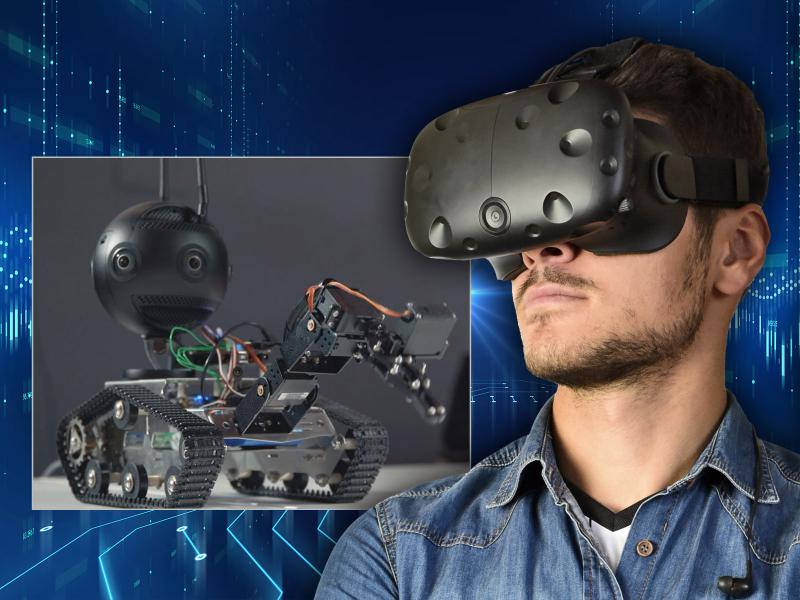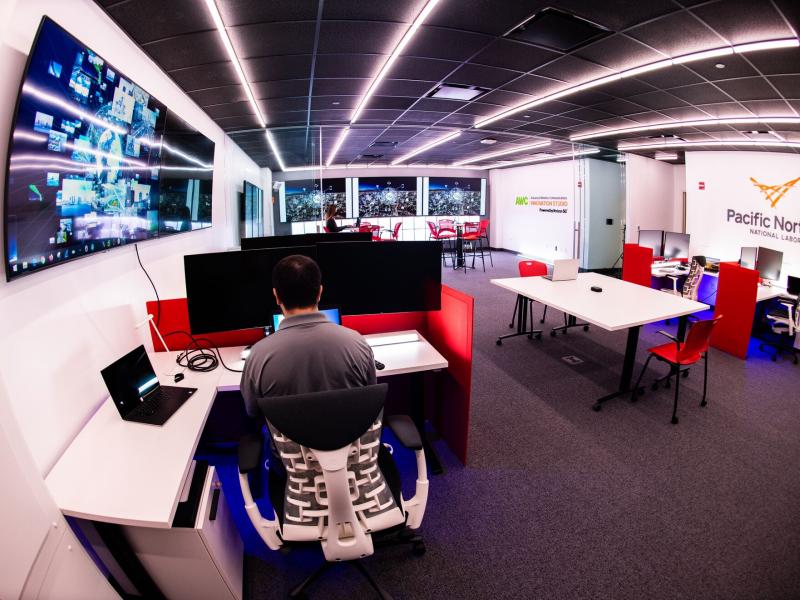
5G Security
5G Security
Next-generation connectivity
Next-generation connectivity
Our researchers work to understand how the 5G mobile network affects the threat landscape for people, places, and things.
(Image by Fit Ztudio | Shutterstock.com)
With the adoption of the fifth-generation mobile network, known as 5G, the world will be connected in ways it has never been before—transforming how thousands of devices function, communicate, and connect.
While 5G introduces new possibilities for innovation, it also presents many unknown risks. The big question: How will this digital transformation change the threat landscape for people, places, and things? Pacific Northwest National Laboratory (PNNL) researchers are working to answer that question.
Understanding and securing the 5G network
As 5G becomes more of a reality, society will continue to push the limits of innovation. This revolution in wireless communication poses new dimensions of vulnerabilities through connected digital systems and a new set of challenges for the security, safety, and resilience of cyber-physical systems, including critical infrastructures, such as the power grid.
Novel types of attacks, innovative sensing capabilities, and use cases in autonomous operations are making 5G a focal point of research for PNNL. Pooling our expertise across PNNL in areas ranging from cybersecurity and artificial intelligence, to data science and computing, to electrical engineering, we lead 5G research in three key areas:
- Adopting 5G communications and computing architectures in support of sponsor missions and capabilities;
- Exploring security implications of applying 5G solutions for critical or vulnerable systems; and
- Developing novel compute paradigms, bringing PNNL’s capabilities and strengths alongside industry early in development.
We work to analyze threats, evaluate vulnerabilities, and develop solutions to defend against attacks on 5G-enabled information technologies and operational technologies.

Exploring 5G in real-world environments
PNNL has two research laboratories designed to explore both the opportunities and risks associated with the adaption of 5G. Each laboratory has standalone capabilities, but they complement each other by creating the complexity of networks with 5G.
The 5G Innovation Studio explores the benefits of 5G with robotics, radiation sensors, virtual reality, and more in support of PNNL’s mission to tackle challenges in national security, energy efficiency, and scientific discovery. For example, researchers are looking at how 5G can transform port and border security, grid infrastructure operations, and augmented human-machine teaming capabilities for first responders. PNNL was the first Department of Energy national laboratory with Verizon 5G ultra-wideband wireless technology to augment our evolving open core, standalone technology.
The Internet of Things (IoT) Common Operating Environment focuses on studying the network of IoT devices, individual components of “things” (e.g., software, hardware, communications), vulnerability assessments, pattern of life analysis, and identification of unknown IoT.
PNNL has the capability to not only test and evaluate 5G from a device and network perspective, but also to test and evaluate hypothetical 6G networks that are being defined today. With our research and expertise, we are working to keep the United States ahead of the applications and potential security implications of the rapidly changing wireless communication networks.